- HOME
- Sustainability
- Environment
- Energy-Saving Initiatives
Energy-Saving Initiatives
Starting from 2020, we have been aiming to reduce our environmental impact and contribute to a decarbonized society. To help do this, we have been reducing energy consumption by upgrading and improving the efficiency of our air-conditioning and lighting equipment as part of a five-year plan, as well as installing charging stations for low-emission buses and electric vehicles.
Long-Term Efforts in Terms of Equipment
Since 2005, the JAT Group has implemented measures for its facilities in response to the Tokyo Metropolitan Government’s measures to curb global warming.
The main measures are summarized by category as follows.
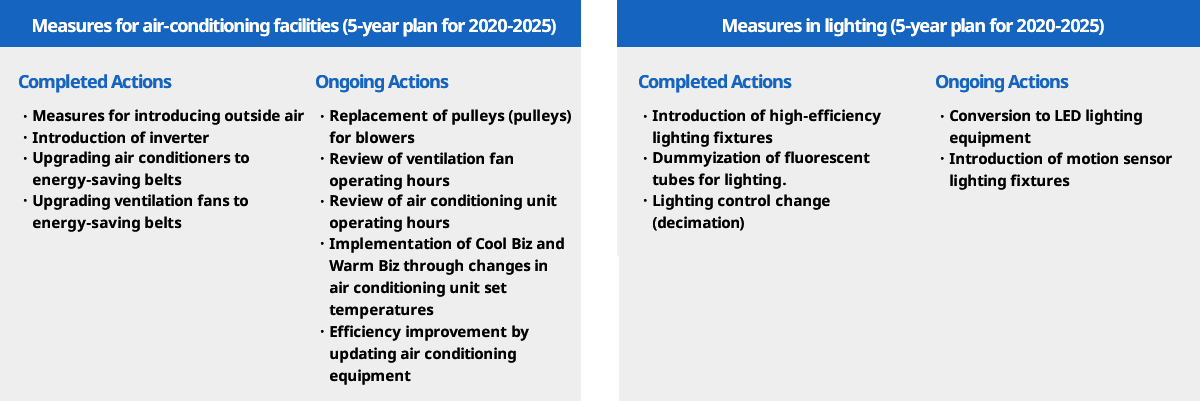
Natural and LED Lighting
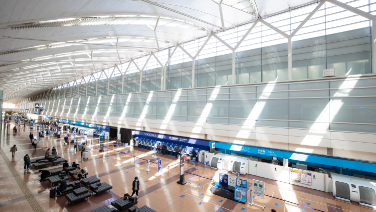
Natural light from skylights and highlight windows is actively used to reduce the amount of electricity consumed for lighting. In addition, we use low-energy LED lighting to save electricity.
Upgrade and Improvement of Air-Conditioning Equipment Efficiency
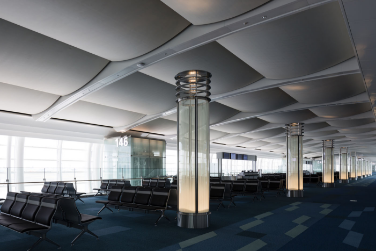
We have upgraded the air-conditioning equipment at our terminals for more efficient use so that they conserve energy. Terminal 3’s air breeze tower and floor ventilation air-conditioning system cools efficiently by focusing solely on the areas people occupy instead of cooling the entire ceiling area, which can reach up to 20 meters.
Low-E Double Glazing
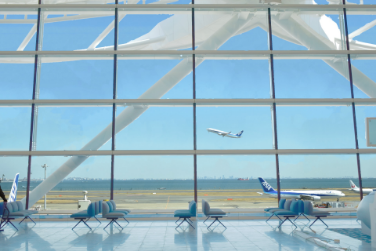
We have adopted double glazing to mitigate temperature increases caused by direct sunlight through glass windows. This helps to keep the interior cool in summer and prevent heat from escaping in winter, making air conditioning more efficient.
Introduction of “Radi-Cool,” a Radiative Cooling Material
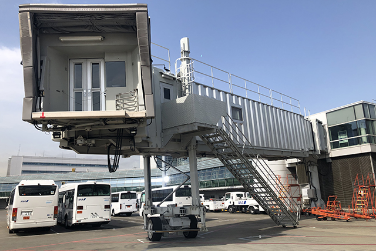
“Radi-Cool” is an environmentally-friendly product that reduces room temperatures without using energy. It does this by reflecting sunlight and utilizing the natural phenomenon of radiative cooling to dissipate indoor heat. We use it in various areas, including the glass surfaces of terminal buildings, boarding bridges, and the connecting pathways in parking lots.
This method of dissipating indoor heat without using energy reduces our environmental impact, contributing toward the goal of a carbon-neutral/decarbonized society.
Utilizing Low-Emission Hybrid Vehicles for Haneda Airport’s Free Shuttle Buses
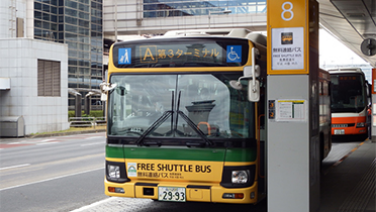
Japan Airport Terminal Co., Ltd. and Keihin Kyuko Bus Co., Ltd. now use low-emission, stepless vehicles for the free shuttle buses that connect Terminals 1, 2, and 3 at Haneda Airport.
These low-emission vehicles are hybrid vehicles powered by a combination of diesel fuel and electricity and have met numerous standards for fuel efficiency and low emissions, including 2015 standards for large vehicles.
Installation of Electric Vehicle Charging Stations
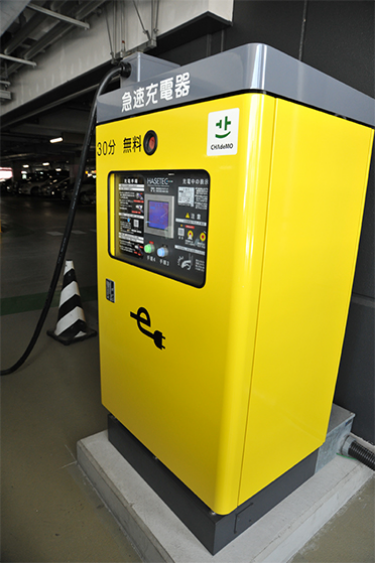
In line with the growing popularity of eco-friendly electric vehicles, we have installed free electric vehicle charging stations in Haneda Airport’s P1 and P4 parking lots.
(Total of 6 charging stations available. P1: 1 rapid, P4: 1 rapid, 5 standard speed)
Power Saving Measures Adopted after the Great East Japan Earthquake
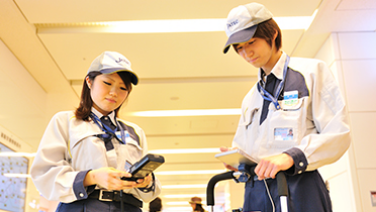
Amid nationwide concerns about power shortages, we have implemented the following power-saving measures with environmental conservation in mind.
1. Air-conditioning systems: Adjusted the output of air-conditioning inverters and partially halted operation of the air-conditioning exhaust fans
2. Lighting systems: Reduced the usage of lobby lights
Cool Biz and Warm Biz
At Japan Airport Terminal Co., Ltd., we encourage “Cool Biz” wear in summer and “Warm Biz” in winter. This energy-saving campaign in Japan encourages lighter business wear in summer and warmer business wear in winter to help reduce energy use. We do this not just at our Group offices, but also at tenant locations and terminal lobbies.
The program is adapted flexibly according to the work environment, so as not to interfere with business operations or employee health.
| Program details | Period | Target temperatures |
|---|---|---|
| Cool Biz | May 1 to October 31 | Office temperature: 28°C in principle. Target temperature in terminal lobbies: 26 to 27°C. (Approximate) |
| Warm Biz | November 15 to March 31 | We try to maintain the terminal lobbies at a target temperature of 22°C and make adjustments as required for comfort and efficiency. |
